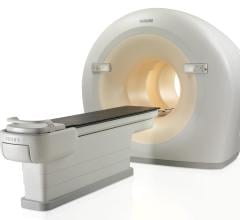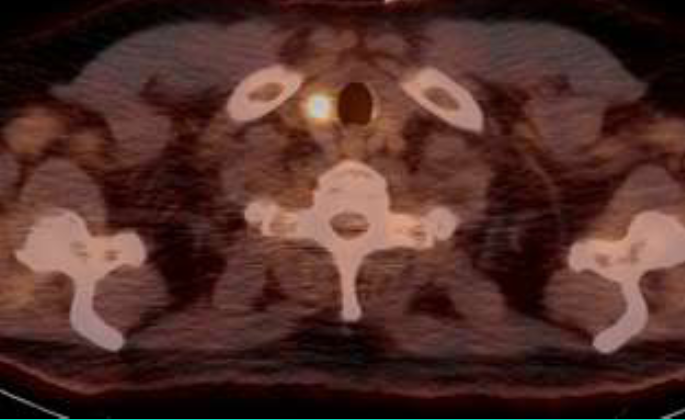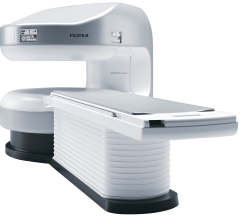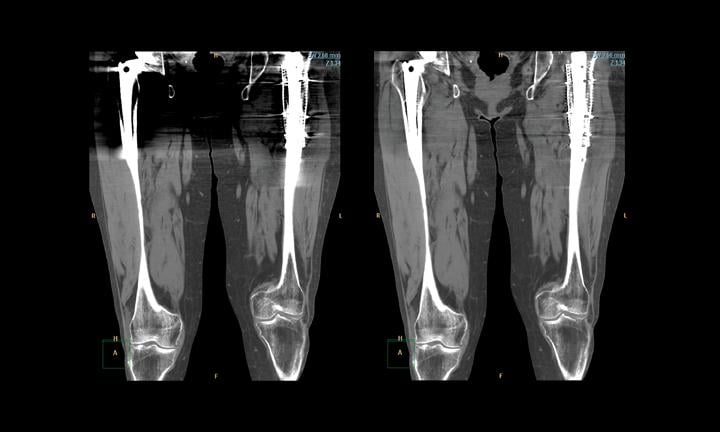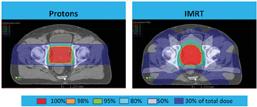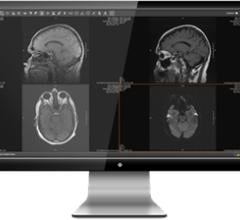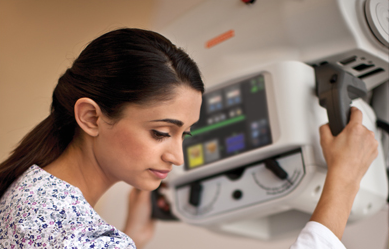Intelerad Medical Systems announced three new offerings as part of their Nuage suite of cloud-based solutions. Amongst the new solutions is CloudComplete — a fully-featured, cloud-based version of their award-winning IntelePACS solution. Other solutions added to the suite include CloudStore, which enables imaging departments to move all long-term storage to the cloud; and CloudMirror, which offers the flexibility of an off-site hosted data replication service.
The Society of Nuclear Medicine and Molecular Imaging (SNMMI) says it applauds the Centers for Medicare and Medicaid Services (CMS) on the ruling issued on coverage for positron emission tomography (PET) procedures. Focusing on the National Oncologic PET Registry (NOPR), scan limitations and coverage for prostate cancer, the ruling will have a significant impact on patient care, according to the society.
Radiation oncology research received 197 grants, totaling only 1.6 percent ($85.5 million) of the $5.4 billion in cancer research funding from the National Institutes of Health (NIH) in Fiscal Year (FY) 2013, according to a study available online and in the June 1, 2013, print issue of the International Journal of Radiation Oncology • Biology • Physics (Red Journal), the official scientific journal of the American Society for Radiation Oncology (ASTRO).
Fujifilm’s APERTO Lucent is a 0.4T mid-field, open MRI system addressing today’s capability and image quality needs ...
A study examining trends in X-ray computed tomography (CT) use in children in the United States has found that reducing unnecessary scans and lowering the doses for the highest-dose scans could lower the overall lifetime risk of future imaging-related cancers by 62 percent. The research by a UC Davis Health System scientist was published in JAMA Pediatrics. It is accompanied by a journal editorial.
Siemens Healthcare has introduced Biograph mCT Flow, a positron emission tomography/computed tomography (PET/CT) system that, for the first time ever, overcomes the limitations of conventional bed-based PET/CT with FlowMotion, a revolutionary new technology that moves the patient smoothly through the system’s gantry, while continuously acquiring PET data. Biograph mCT Flow with FlowMotion takes routine image quality to a new level by enabling imaging protocols based on the organ’s need.

SPONSORED CONTENT — Fujifilm’s latest CT technology brings exceptional image quality to a compact and user- and patient ...
In an increasingly impersonal world, where Facebook counts the number of friends we have and texting takes the place of conversation, who would not want personalized medicine?
SPONSORED CONTENT — Fujifilm’s latest CT technology brings exceptional image quality to a compact and user- and patient ...
The National Lung Screening Trial (NLST) was a National Cancer Institute sponsored trial that began in 2002. This randomized controlled trial examined more than 50,000 patients who were classified as being at high risk for the development of lung cancer — they had smoked at least 30 pack years (one pack per day for 30 years or two packs per day for 15 years); they were between 55 and 74; and they were either current smokers or former smokers who had quit within the past 15 years. The trial aimed to see whether screening with low-dose computed tomography (CT) improved outcomes over screening with chest radiography. It was halted early in October 2010 when a 20 percent mortality benefit was observed in the low-dose CT arm.
For radiology practices and imaging centers still debating the pros and cons of Stage 2 meaningful use (MU), the calendar looms larger with each passing day. Stage 2 MU now begins in less than a year, and while eligible providers have until 2016 to attest to Stage 2, everyone must go through two years of Stage 1 attestation before progressing to the next stage. Arcadia Radiology Medical Group (ARMG) and California Medical Business Services went through the Stage 1 MU process early, in order to prepare for Stage 2.
Advanced visualization software continues to make surgical planning more efficient and accurate as technology advances. Surgeons can map out procedures based on images from computed tomography (CT), magnetic resonance imaging (MRI) and positron emission tomography (PET) exams, among other types of digital imaging and communications in medicine (DICOM) modalities. The images allow physicians to see areas of interest from multiple angles, and isolate various structures, organs and vessels that are of interest in a matter of minutes. This advancement in technology has increased physician interaction and provided an opportunity for enhanced patient education that was not previously available.
SPONSORED CONTENT — EnsightTM 2.0 is the newest version of Enlitic’s data standardization software framework. Ensight is ...
Radiation exposure from multidetector computed tomography (CT) has become a pressing public health concern in both lay and medical publications. Implementation of iterative reconstruction offers the ability to minimize radiation exposure while preserving and, in some cases, improving image quality. However, in order to evaluate iterative reconstruction software, one must first understand the basics of how it works.
We are witnessing a new era in proton therapy research, with an unprecedented number of clinical studies under way. For three decades, research has focused heavily on pediatric tumors and tumors of the brain, spine and prostate, establishing that proton therapy is efficacious, enables precise targeting of tumors permitting higher doses of radiation with few short- and long-term side effects, and maintains a high quality of life for patients.[1-9] The treatment also has been shown to reduce the likelihood of treatment-related malignancies.[10] Researchers now are exploring the clinically meaningful benefit of proton therapy in diseases of high incidence, particularly lung and breast cancer, where the precision and limited side effects can provide effective treatment with significant long-term benefit to the patient. Initial results prove hopeful, especially for lung cancer, which remains the No. 1 cancer killer of both men and women.[11]
Breast mammography has become the standard diagnostic breast screening tool in women’s healthcare, aiding in the detection and intervention of early stage breast cancers. Some doctors have reported seeing a 30 percent reduction in breast cancer mortality since the implementation of routine screening mammography.[1] Due to such statistics, women are encouraged to get mammograms annually after the age of 40. However, the benefits of routine mammography have remained a controversial topic within the healthcare community.
Did you know that approximately one-third of all the data in world is created by the healthcare industry and that ...
The phrase “doing more with less” is becoming more prevalent in tightening economic environments, and the operating room (OR) is one example of where hospitals are looking to maximize savings. Mobile C-arm units are important for maximizing space in the OR and can provide the image quality needed to visualize anatomy and devices during complex surgical procedures. The latest advances in mobile C-arms aim to provide users with the flexibility and ergonomics that can support accomplishing more in the OR with less.
The Women’s Breast Center at Stamford Hospital offers comprehensive breast care services to women of all ages, using high technology, a multidisciplinary and patient-centered approach to care, and community education and screening. The facility has been recognized by the American College of Radiology and the American College of Surgeons. The Women’s Breast Center is one of two locations for the Hospital’s mammography services, the other being the Darien Imaging Center.
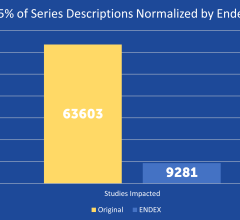
SPONSORED CONTENT — EnsightTM 2.0 is the newest version of Enlitic’s data standardization software framework. Ensight is ...
Introducing the Nuage suite of Cloud PACS solutions. With resilient data protection, replication and dynamic storage that allows firms to pay as they grow, Nuage facilitates secure, stable and scalable growth, managed by imaging workflow experts.
Between June and October, 2013, healthcare providers at hospitals and medical centers across the United States and Canada can experience GE Healthcare’s entire line of Centricity* Imaging technologies when the Centricity Imaging IT Tour visits locations in over 30 major markets.
eHealth Technologies’ eHealthViewer ZF is a zero footprint viewer that enables clinicians, with any secure browser, to instantly access their patients’ medical images, in diagnostic-quality, right from within their patients’ medical record. The latest enhancement to the eHealthViewer ZF is Image Collaboration. Whether through consultation with a remote specialist or grand rounds with the patients’ clinical care team, the eHealthViewer ZF collaboration tool delivers real-time, fluid image review and interaction for healthcare professionals. Using this singular feature, multiple users at different locations, can interactively view and manipulate radiology and cardiology images with full access to the eHealthViewer ZF advanced toolset.
Just a few years ago, integrated positron emission tomography and magnetic resonance (PET/MR) imaging was found only in research institutes, but little by little the technology has expanded into clinical practice. This is especially true for cardiac indications, for which the highly sensitive soft tissue contrast of MR and the functional and metabolic imaging of PET are particularly valuable. New research proves the value of PET/MR compared to PET/computed tomography (CT) in cardiac applications, say researchers at the Society of Nuclear Medicine and Molecular Imaging’s 2013 Annual Meeting.
A new report from KLAS, “Digital X-Ray Performance 2013: Impact of a Wireless Workflow,” shows providers are seeing big benefits from wireless detector technology. With all of the major vendors offering it and prices coming down, wireless digital radiography (DR) is becoming a standard for digital X-ray room replacements.
The American College of Radiology (ACR) strongly urges Americans ages 50-and-older, particularly those with a family history of colorectal cancer, not to delay or forego recommended screening due to concerns raised by a June 1, New York Times article titled, “The $2.7 Trillion Medical Bill: Colonoscopies Explain why U.S. Leads the Work in Health Expenditures.”

 June 12, 2013
June 12, 2013 
